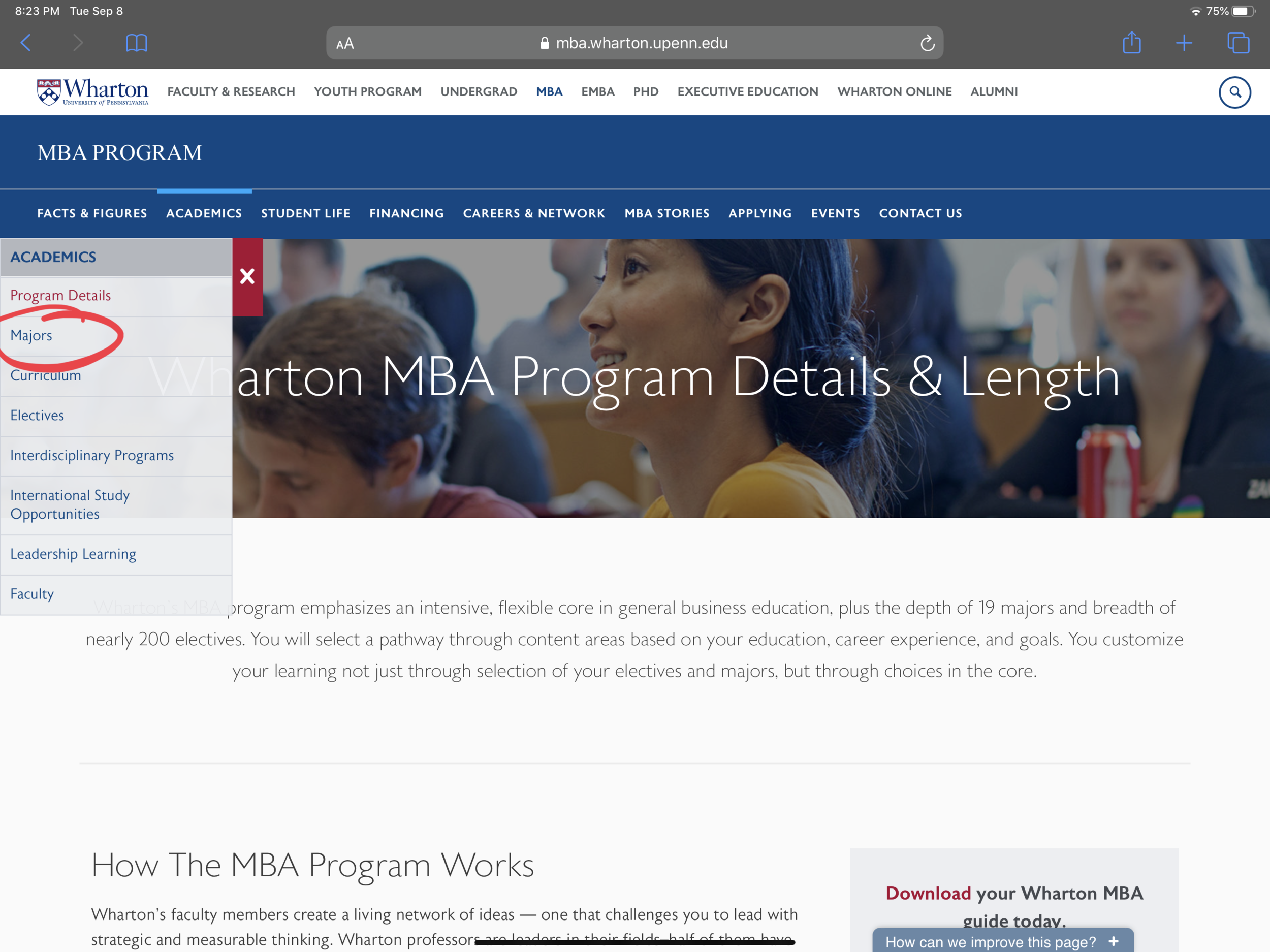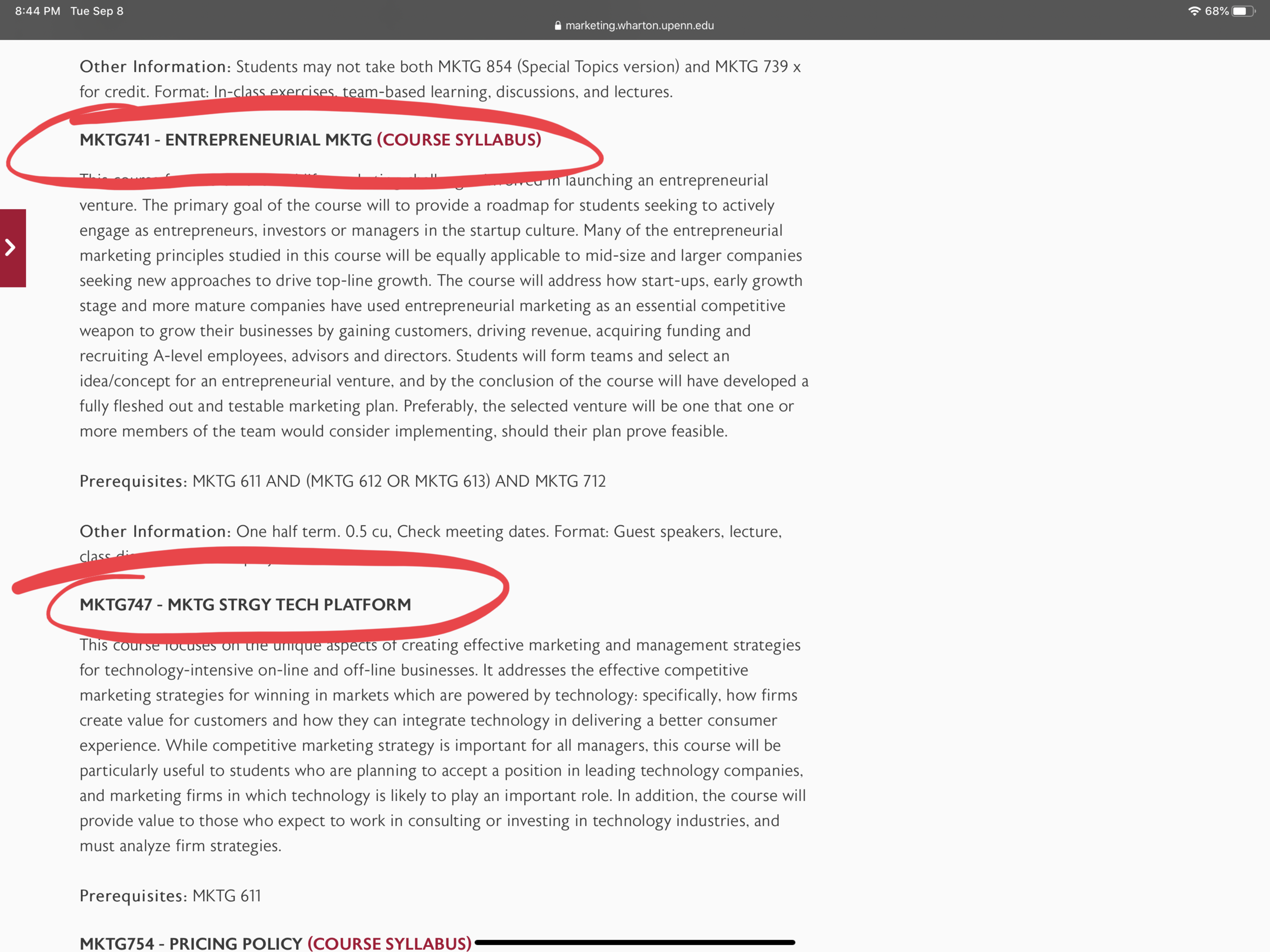Developing an Awesome "Why MBA School X" Answer in Under 30 Minutes
Note: This is a follow-up to A Framework for the Perfect “Why MBA School X” Answer. Please read this previous post alongside the post below for the deepest understanding of the “Why MBA School X?” answer.
Each MBA program structures its website differently but there are patterns you can take advantage of to speed your research. Wharton has one of the cleanest and richest websites so I’ll use that for this walkthrough, which I do with my clients when they need to crystallize the connection between their target school and their goals. For the purpose of this walkthrough, let’s assume you are applying to Wharton’s 2-year MBA with goals centered around technology marketing.
Step #1: Make sure you’re researching the right program!
Step #2: When looking for courses, I suggest starting with “Majors” (“Programs”, “Departments”, etc.) to seek out hard-skill electives that closely match your goals. I say electives because core courses generally track the same across MBA programs, making it difficult to establish a distinctive connection.
Step #3: Look for the major(s) that best aligns with your goals.
Step #4: Keep drilling down.
Step #5: Keep drilling until you find the Course Descriptions (Curriculum, etc.) for your major. If you aren’t reading the actual course descriptions and incorporating that information in your answer, then your connections won’t be tight enough and you might risk misunderstanding the actual course content.
Step #6: Identify candidate courses that speak directly to your goals. After reading the course description, rephrase and simplify it so that the adcom can immediately understand the connection between the course(s) and your goals. As adcoms are primarily interested in your short-term goals, make sure that your choices reflect that priority.
Step #6 (repeat): Identify candidate courses that speak directly to your goals. After reading the course description, rephrase and simplify it so that the adcom can immediately understand the connection between the course(s) and your goals. As adcoms are primarily interested in your short-term goals, make sure that your choices reflect that priority.
Step #7: After showcasing the hard-skill electives most closely suited to your goals, it’s time to seek out the leadership/soft-skill development opportunities and programming that all schools offer and that should be essential to achieving your goals.
Step #8: Familiarize yourself with your target school’s leadership learning approach. Wharton makes that easy with its clear structure and detailed offerings. You can also see how they structure the program (e.g., Learning Teams, Cohorts, Clusters, etc.) and you should use their exact terminology to illustrate your familiarity with their program.
Step #8 (repeat): Familiarize yourself with your target school’s leadership learning approach. Wharton makes that easy with its clear structure and detailed offerings. You can also see how they structure the program (e.g., Learning Teams, Cohorts, Clusters, etc.) and you should use their exact terminology to illustrate your familiarity with their approach.
Step #9: Connect your school’s leadership program with your own growth needs. This is usually the most difficult step, because it requires you to understand your leadership limitations and to express how you will improve them through the leadership program of your target school.
There is a lot more you can do to research schools, including attending (online) information sessions, communicating with alumni/current students, and doing an even deeper dive through the school’s website. But the above approach works well if you’re under time pressure or even just looking to establish a solid foundation answer.











